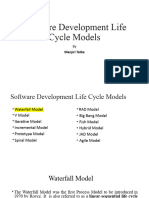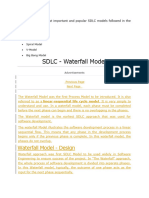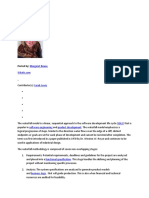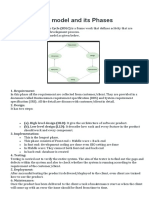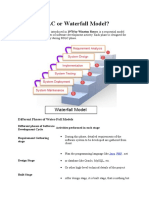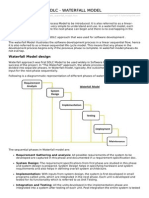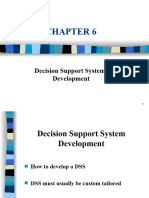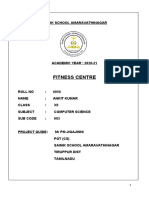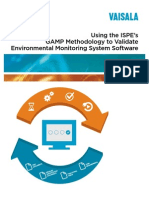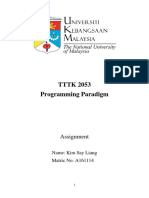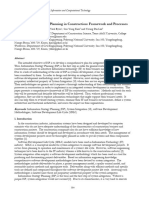0% found this document useful (0 votes)
29 views30 pagesProcess Models
The document discusses various software development life cycle (SDLC) models, primarily focusing on the Waterfall Model and the Spiral Model. The Waterfall Model is a sequential approach with clearly defined phases, emphasizing documentation and quality control, while the Spiral Model combines iterative processes with risk management, making it suitable for complex projects. Additionally, the Prototyping Model is highlighted for its flexibility and early customer feedback, although it comes with challenges such as cost and documentation issues.
Uploaded by
Samiksha KalakeCopyright
© © All Rights Reserved
We take content rights seriously. If you suspect this is your content, claim it here.
Available Formats
Download as PDF, TXT or read online on Scribd
0% found this document useful (0 votes)
29 views30 pagesProcess Models
The document discusses various software development life cycle (SDLC) models, primarily focusing on the Waterfall Model and the Spiral Model. The Waterfall Model is a sequential approach with clearly defined phases, emphasizing documentation and quality control, while the Spiral Model combines iterative processes with risk management, making it suitable for complex projects. Additionally, the Prototyping Model is highlighted for its flexibility and early customer feedback, although it comes with challenges such as cost and documentation issues.
Uploaded by
Samiksha KalakeCopyright
© © All Rights Reserved
We take content rights seriously. If you suspect this is your content, claim it here.
Available Formats
Download as PDF, TXT or read online on Scribd
/ 30










